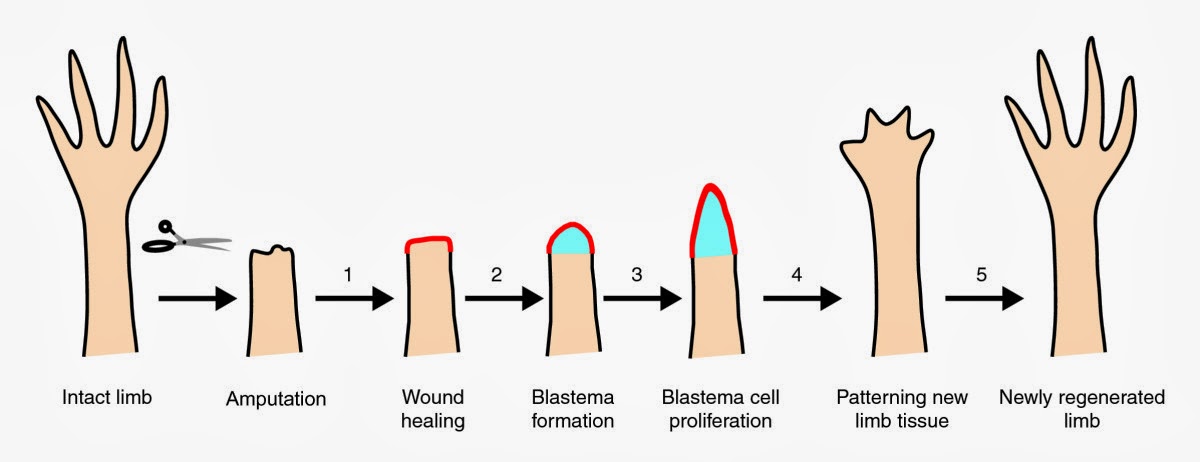Try as we might, humans can’t regrow limbs. But losing your left leg isn’t such a problem for axolotls.

Last Wednesday, Dr. Jessica Whited gave a fascinating talk about the importance of studying these strange little salamanders. Axolotls are capable of regenerating lost limbs so well that once a limb has fully grown back, you can’t tell the difference. No scars, no deformities. This genetic phenomenon serves as a powerful model for uncovering what mechanisms might be required for stimulating regeneration in humans.
The limb regeneration process goes through a few stages. Within hours after amputation, a wound epidermis forms around the injury. Next, a blastema grows – a big clump of cells that will be the basis for future growth. After that, a new limb just kind of sprouts out as you might imagine.

So what gives the axolotl this seemingly magical ability? In attempt to answer that question, Whited’s lab looked at how the process starts – specifically at the creation of the blastema, something mammals do not form post-injury. They found that a single amputation causes an activation of progenitor cells throughout the axolotl’s body. Cells in the heart, liver, spinal cord, and contralateral limb all reenter circulation. Essentially an activation signal is sent throughout the whole body, indicating a systemic response to the injury rather than a local one.
Another question Whited sought to answer was if the same limb could regenerate multiple times. She had her student Donald Bryant carry out an experiment on a group of axolotls. Bryant would repeatedly amputate the same limb, letting it fully regrow for ten weeks between amputations. The results of the experiment show that after five amputations only 60 percent of the limb would regenerate. This percentage decreased with the number of amputations. So while axolotls may seem like they have super powers, they aren’t exactly invincible. They decline in their regenerative capabilities after repeated amputation.

A key finding in this experiment was that repeated amputation led to a decrease in the EYA2 gene (Eyes Absent 2). This particular gene was deemed necessary for the blastema cells to progress through different growth checkpoints. It is required during the cell cycle “to execute decisions about whether the cells will continue to proliferate or not.” So while we don’t exactly know why, we do know that EYA2 plays an important role in the axolotl’s regenerative powers.
Although Whited and her team were able to uncover some important
findings, several questions still linger. How is the activation of EYA2 induced
following amputation? Why is repeated amputation linked to less EYA2 genes? If cells
are poised to anticipate injury / DNA damage, why is it that repeated
amputation leads to less regeneration?
Humans and other mammals are not quite as lucky as the axolotl. Amputation is a relevant and serious issue, yet no biological solution has been devised. Thankfully, the research conducted around axolotl regenerative properties could provide us with knowledge on natural cellular reprogramming. Maybe one day we’ll be able to regrow limbs just like Deadpool.

